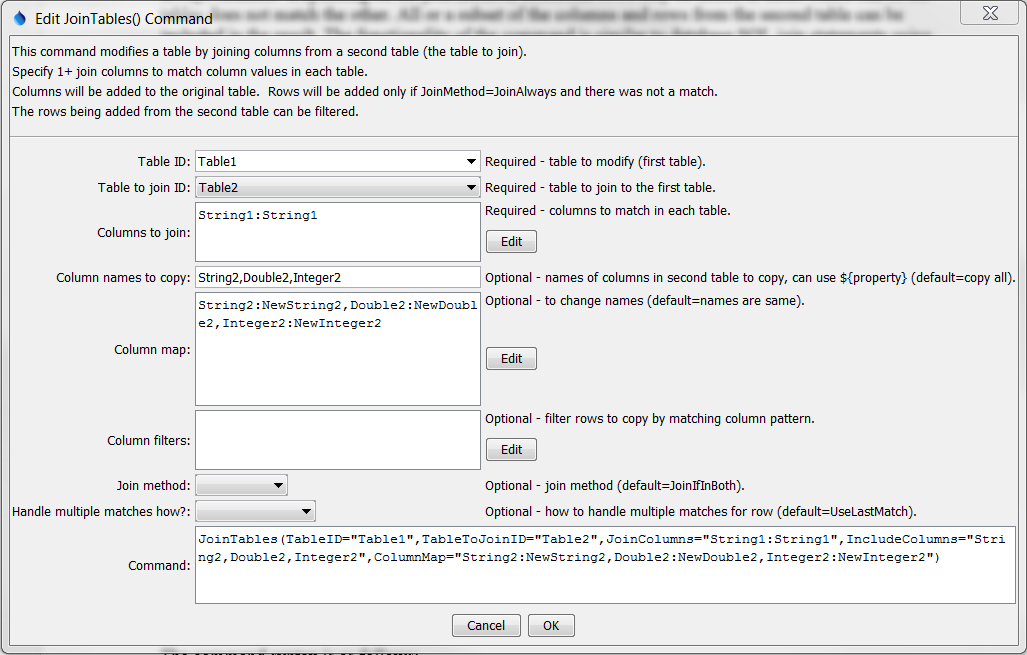TSTool / Command / JoinTables
Overview
The JoinTables command joins two tables that have matching column values,
resulting in the first table being modified to contain additional columns from the second table.
Rows from the first table are always retained. Depending on the join method,
additional rows may be added in cases where one of the tables does not match the other.
All or a subset of the columns and rows from the second table can be included in the result.
The functionality of the command is similar to database SQL join statements using left, right, center, etc. join syntax.
Command Editor
The following dialog is used to edit the command and illustrates the syntax of the command
(in this case illustrating how values in a column named LocationID are copied to a new table).

JoinTables Command Editor (see also the full-size image)
Command Syntax
The command syntax is as follows:
JoinTables(Parameter="Value",...)
Command Parameters
| Parameter&inbsp; | Description | Default |
|---|---|---|
TableIDrequired |
The identifier for the original table. This table will be modified. Can be specified using ${Property}. |
None – must be specified. |
TableToJoinIDrequired |
The identifier for the table to join. Can be specified using ${Property}. |
None – must be specified. |
JoinColumnsrequired |
The names of columns to be compared in the join, using syntax, and can use ${Property} syntax:Table1ColumnName1:Table2ColumnName1,Table1ColumnName2:Table2ColumnName2 |
Required – must specify at least one column to compare |
IncludeColumns |
Specify the names of columns to copy from the second table into the first table, separated by commas. The columns indicated by JoinColumns will not be added because they should already be in the table. Can be specified using ${Property}. |
Copy all of the columns from the TableToJoinID table. |
ColumnMap |
Specify new names for the output columns being included, using syntax, and can use ${Property} syntax:OriginalTable2ColumnName1:NewColumnName1, OriginalTable2ColumnName2:NewColumnName2 |
Column names in the result will be the same as in the original TableToJoinID table. |
ColumnFilters |
Filters that limit the number of rows being processed, using the syntax, and can use ${Property} syntax:Table2Column1:FilterPattern1, Table2Column2:FilterPattern2Patterns can use * to indicate wildcards for matches. Only string values can be checked (other data types are converted to strings for comparison). Comparisons are case-independent. All patterns must be matched in order to copy the row. In the future a command may be added to perform queries on tables, similar to SQL for databases. |
No filtering. |
JoinMethod |
Indicate how the tables should be joined:
|
JoinIfInBoth |
HandleMultipleJoinMatchesHow |
Indicate how to handle multiple matches resulting from the join:
|
UseLastMatch |
Examples
See the automated tests.
Troubleshooting
See Also
AppendTablecommandCopyTablecommandFreeTablecommandNewTablecommandReadTimeSeriesListcommand